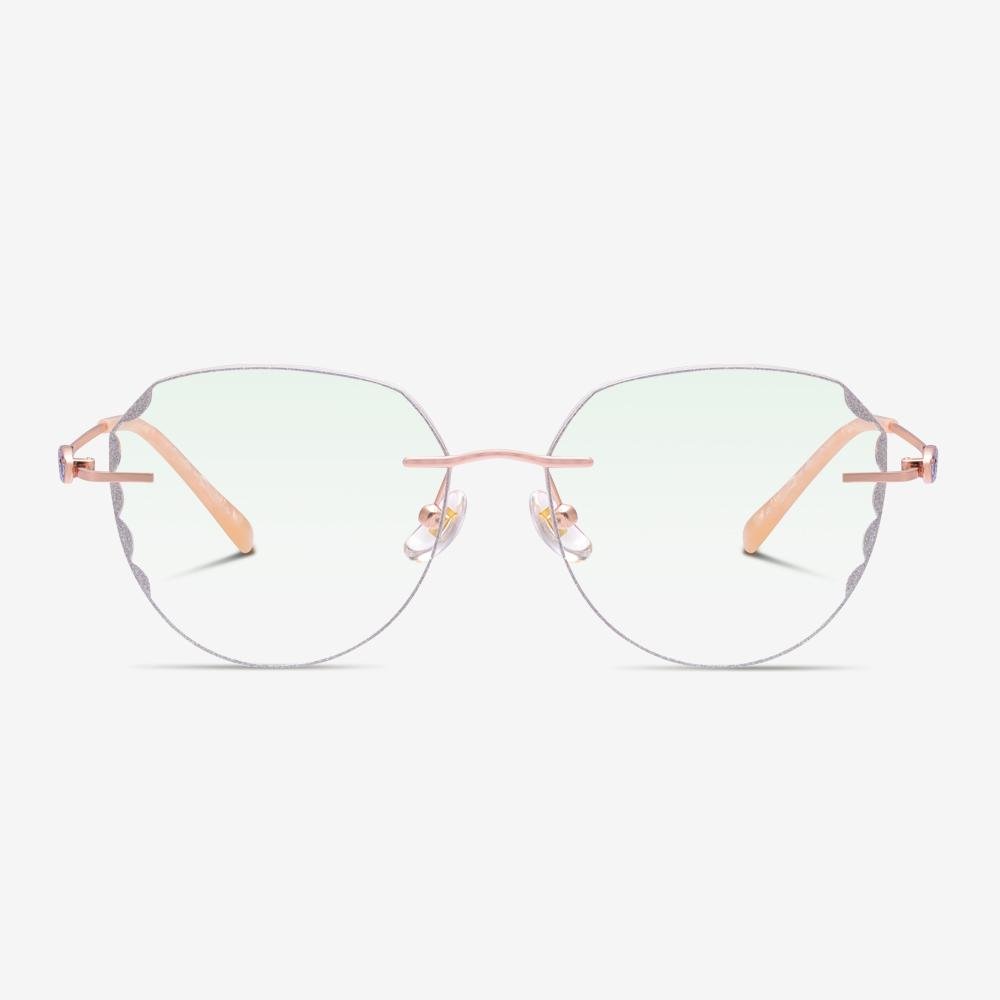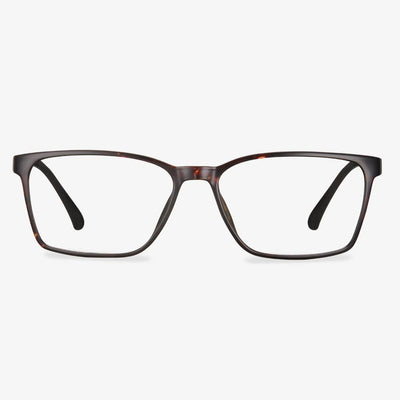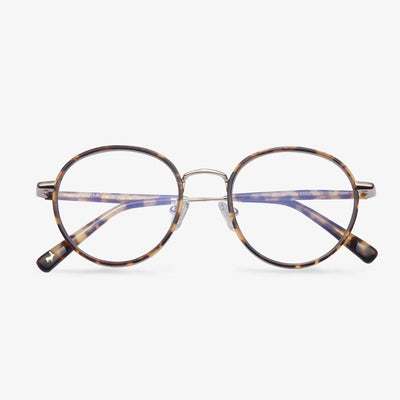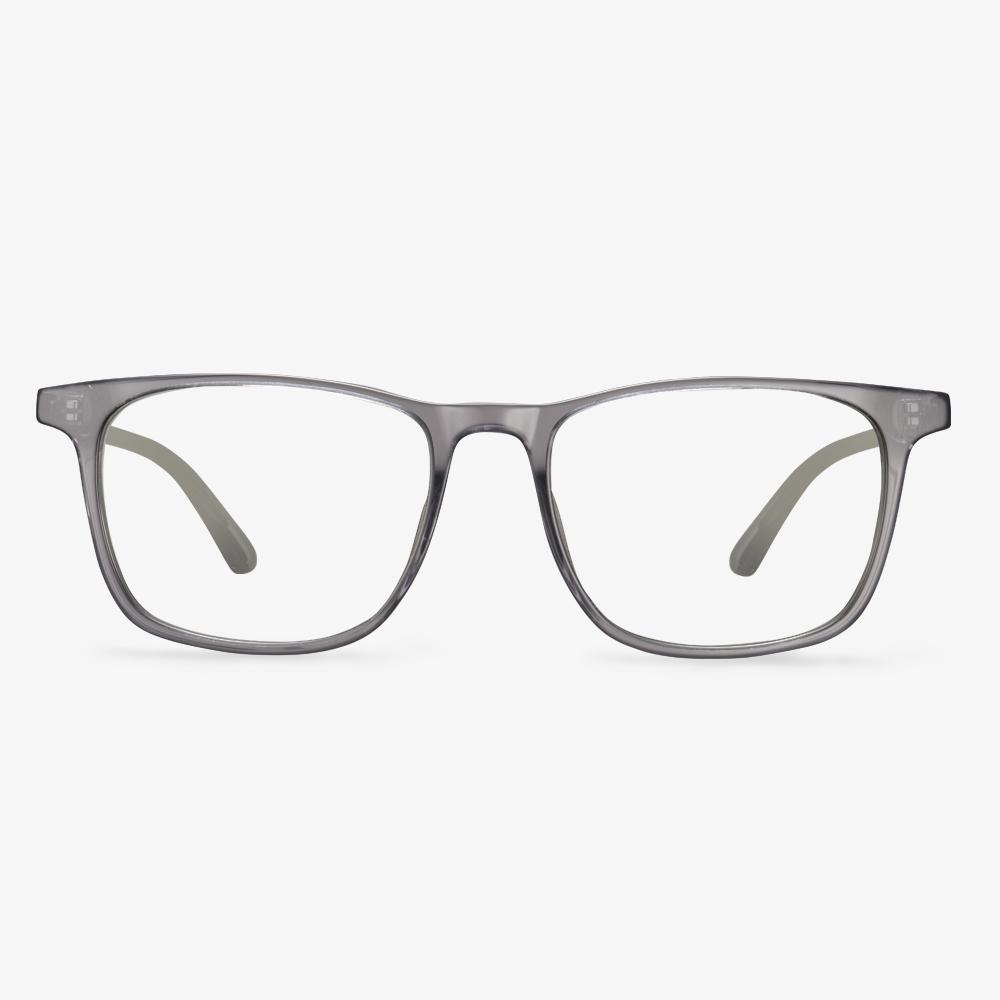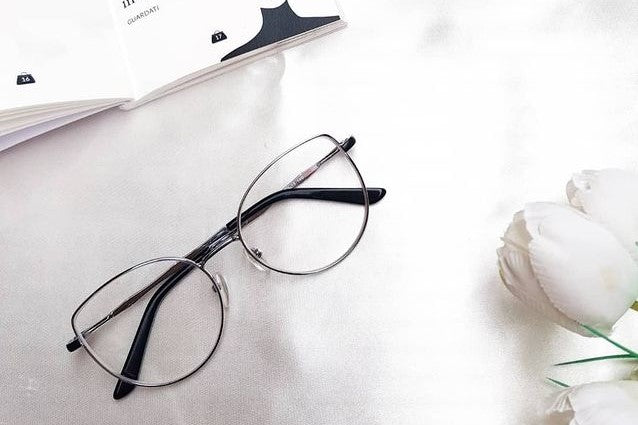What is the processing technology to make the lens thin?
For myopic lenses, the larger the diameter, the thicker the edge. Therefore, for customers with high myopia, we will recommend frames with smaller ring diameters, so that the edges of the processed lenses will be thinner. The edges of farsightedness lenses are already very thin (convex lenses are thick in the middle and thin on the sides), and the key determinant of lens thickness is the center thickness. In addition to the refractive index, which affects the thickness of the farsightedness lens, the influence of diameter is more important. Therefore, for patients with farsightedness, the most effective way to make lenses lighter and thinner is to choose a smaller frame and then customize a pair of lenses with the right diameter.
How do prism glasses work?
Prism glasses rearrange the images by bending the light and moving the images the eye sees to the desired position. They can align?with what each eye sees, eliminating the double image that the brain interprets. When the images seen by both of your eyes are rearranged, the light is redirected to the right position in the retina of each eye. The brain fuses these two images together to form one clear image.
The origin of modern eyeglasses
The origins of modern glasses can be traced back more than 1,000 years. In the Middle Ages, the reading stones used by monks were glass spheres, sometimes filled with water and placed on objects to magnify them.Glassblowers in Italy created reading stones, similar to modern hand-held magnifying glasses. The reading stone can be placed on the wearer's nose or in front of the face. Later, Spanish craftsmen built the first cobra-framed temple in the 17th century. They tie ribbons or strings to the frames and tie them around the user's ear.
In the 18th century, Edward Scarlett created the first wearable glasses, providing more comfort for eyewear wearers. These early glasses had glass lenses embedded in heavy frames made of wood, lead, or copper. Natural materials of leather, bone, and horn were later used to make the frames. In the early seventeenth century, lighter steel frames were invented. As eyewear continued to evolve and prescription accuracy improved, the trend for eyewear to become more fashionable began. In the 18th century, bifocal lenses appeared, making it possible to correct upper myopia and lower presbyopia. Later glasses were designed to be fixed by a ribbon or by applying pressure to the bridge of the nose. In the 1980s, plastic lenses were introduced, providing a more durable alternative to glass lenses. Ultimately, the glasses used today are the result of centuries of technological and intellectual advances.
1.67 vs 1.74 High Index Lenses: What Are Their Differences?
In this section, we will show you the differences between 1.67 high index lenses and 1.74 high indexes.
- 74 high index lenses are thinner and lighter than 1.67 high index lenses.
- 74 high index lenses are expensive than the 1.67 high index lenses.
- Both 1.67 and 1.74 high index lenses can reduce the eye distortion caused by strong prescriptions, 1.74 high index lenses perform better than the 1.67 high index lenses.
- As for the color of lens, both come in clear, gray-tinted and brown-tinted, but only 1.67 high index lenses come in Transition brown or gray.
- 74 high index lenses are better for those looking for the thinnest lens possible. So, patients with extremely strong prescriptions chooses this.
- 67 high index lenses are better for those looking to save money or those who do not have extremely high prescriptions. They are also the only choice if you are looking to get Transitions.
From the above information, you can find the main differences between these two lenses are price, thickness, weight, color options and general appearance. Most people who choose 1.67 high index lenses generally either do not have an extremely high prescription or are shopping on a budget. 1.74 high index lenses, on the other hand, are the thinnest and lightest plastic lenses currently in existence.
Why are blue light glasses yellow?
The material of the lens makes it turn yellow. If it's just blue and the lens is yellow, that's the material itself. Blue light glasses can weaken blue light entering human eyes. Blue light is mainly produced by mobile phones and computers in life. The blue light on the electronic screen is unchanged, so a film can only be designed on the lens to absorb blue light. This can effectively reduce blue light. The complementary color of blue light is yellow, so the yellowing of the anti-blue lens is normal. The material of an anti-blue light lens can effectively shield the blue light. If the blue light is removed from the white light we usually see, it will show yellow, which is a normal phenomenon.
What are night driving glasses?
Night driving glasses are usually non-prescription glasses with yellow lenses and can be bought in many optical stores or online. Lenses range in color from light yellow to amber, and some night driving glasses have an anti-reflective coating. The yellow night driving glasses have been manufactured and sold for decades. They were originally sold to hunters as shooting glasses because they gave birds a sharper contrast to the sky on overcast or overcast days.
Do blue light blocking glasses work?
Usually, blue light blocking glasses are yellowish, and this obvious color shift can cause serious visual fatigue. The aggravation of visual fatigue will not control myopia and will accelerate the progression of myopia. The most important thing is that some parents have the misconception that blue light blocking glasses can control myopia. If they allow children to use electronic products without guidance and control, myopia will definitely progress. During online classes, the best way to avoid the blue light damage of electronic products should be to relax their eyes between two classes. You can learn from the 20-20-20 rule recommended by the American Academy of Ophthalmology, which is to look at objects 20 feet away for at least 20 seconds for every 20 minutes. Also, you can take a break of 10-15 minutes between each online class. You can choose to look at the distance, play table tennis at home, or have fun with parent-child interaction. In this way, the tense shoulder and back muscles can be relaxed while the eyes are relaxed and rested. Not only can it prevent and control myopia, but it is also very helpful for improving the efficiency of learning. Teach children to blink their eyes more consciously when watching the electronic screen, and use a warm wet towel to heat the eyes during rest. A humidifier can be used at home to increase the humidity of the surrounding environment. This can effectively prevent dry eyes caused by looking at the electronic screens for a long time.


















